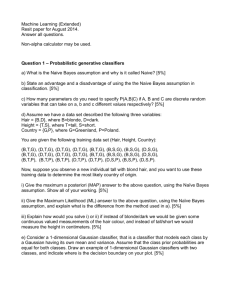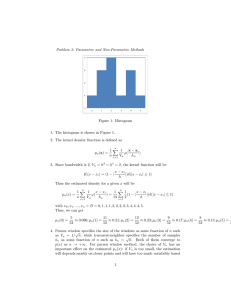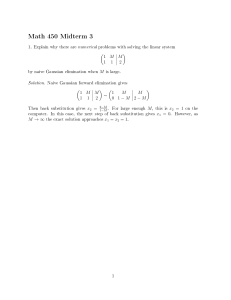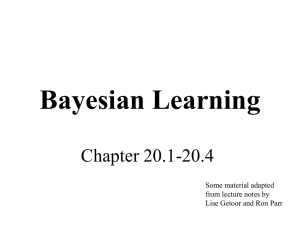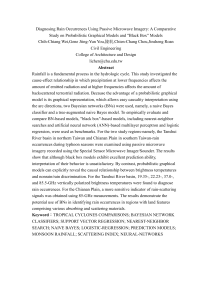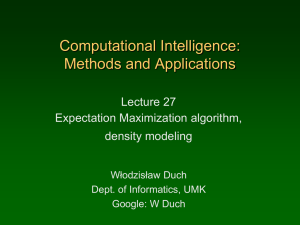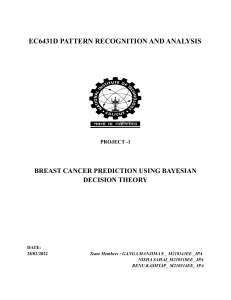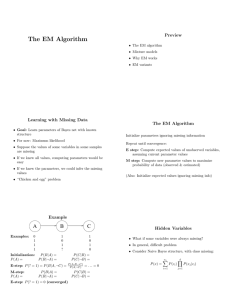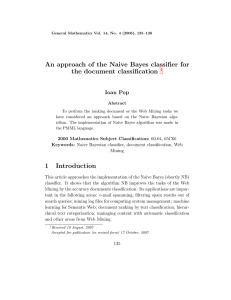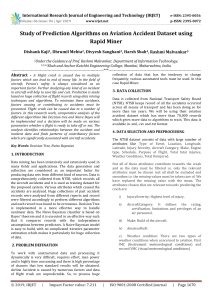CSE 455/555 Spring 2013 Homework 7: Parametric Techniques
advertisement
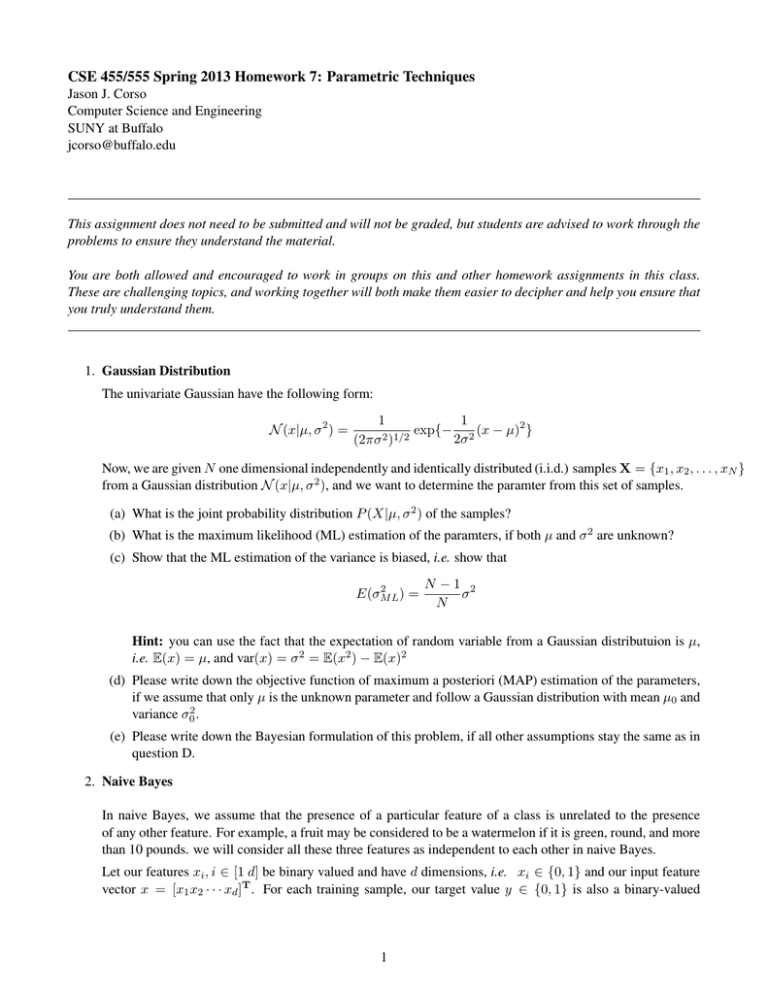
CSE 455/555 Spring 2013 Homework 7: Parametric Techniques
Jason J. Corso
Computer Science and Engineering
SUNY at Buffalo
jcorso@buffalo.edu
This assignment does not need to be submitted and will not be graded, but students are advised to work through the
problems to ensure they understand the material.
You are both allowed and encouraged to work in groups on this and other homework assignments in this class.
These are challenging topics, and working together will both make them easier to decipher and help you ensure that
you truly understand them.
1. Gaussian Distribution
The univariate Gaussian have the following form:
N (x|µ, σ 2 ) =
1
1
exp{− 2 (x − µ)2 }
1/2
2
2σ
(2πσ )
Now, we are given N one dimensional independently and identically distributed (i.i.d.) samples X = {x1 , x2 , . . . , xN }
from a Gaussian distribution N (x|µ, σ 2 ), and we want to determine the paramter from this set of samples.
(a) What is the joint probability distribution P (X|µ, σ 2 ) of the samples?
(b) What is the maximum likelihood (ML) estimation of the paramters, if both µ and σ 2 are unknown?
(c) Show that the ML estimation of the variance is biased, i.e. show that
2
E(σM
L) =
N −1 2
σ
N
Hint: you can use the fact that the expectation of random variable from a Gaussian distributuion is µ,
i.e. E(x) = µ, and var(x) = σ 2 = E(x2 ) − E(x)2
(d) Please write down the objective function of maximum a posteriori (MAP) estimation of the parameters,
if we assume that only µ is the unknown parameter and follow a Gaussian distribution with mean µ0 and
variance σ02 .
(e) Please write down the Bayesian formulation of this problem, if all other assumptions stay the same as in
question D.
2. Naive Bayes
In naive Bayes, we assume that the presence of a particular feature of a class is unrelated to the presence
of any other feature. For example, a fruit may be considered to be a watermelon if it is green, round, and more
than 10 pounds. we will consider all these three features as independent to each other in naive Bayes.
Let our features xi , i ∈ [1 d] be binary valued and have d dimensions, i.e. xi ∈ {0, 1} and our input feature
vector x = [x1 x2 · · · xd ]T . For each training sample, our target value y ∈ {0, 1} is also a binary-valued
1
variable. Then our model is parameterized by φi|y=0 = p(xi = 1|y = 0), φi|y=1 = p(xi = 1|y = 1), and
φy = p(y = 1), and
p(y) = (φy )y (1 − φy )(1−y)
p(x|y = 0) =
=
p(x|y = 1) =
=
d
Y
i=1
d
Y
i=1
d
Y
i=1
d
Y
p(xi |y = 0)
(φi|y=0 )xi (1 − φi|y=0 )(1−xi )
p(xi |y = 1)
(φi|y=1 )xi (1 − φi|y=1 )(1−xi )
i=1
Q
(n) , y (n) ; θ) in terms of the model pa(a) Write down the joint log-likelihood function l(θ) = log N
n=1 p(x
(n)
rameters given above. x means the nth data point, and θ represents all the parameters, i.e. {φy , φi|y=0 , φi|y=1 , i =
1, . . . , d}.
(b) Estimate the paramters using maximum likelihood, i.e.
φi|y=1 .
find solutions for paramter φy , φi|y=0 and
(c) When a new sample point x comes, we make the prediction based on the most likely class estimate
generated by our model. Show that the hypothesis returned by naive Bayes is linear, i.e. if p(y = 0|x)
and p(y = 1|x) are the class probabilities returned by our model, show that there exist some α so that
p(y = 1|x) ≥ p(y = 0|x)if and only if αT x̃ ≥ 0
where α = [α0 α1 · · · αd ]T and x̃ = [1 x1 x2 · · · xd ]T .
2
